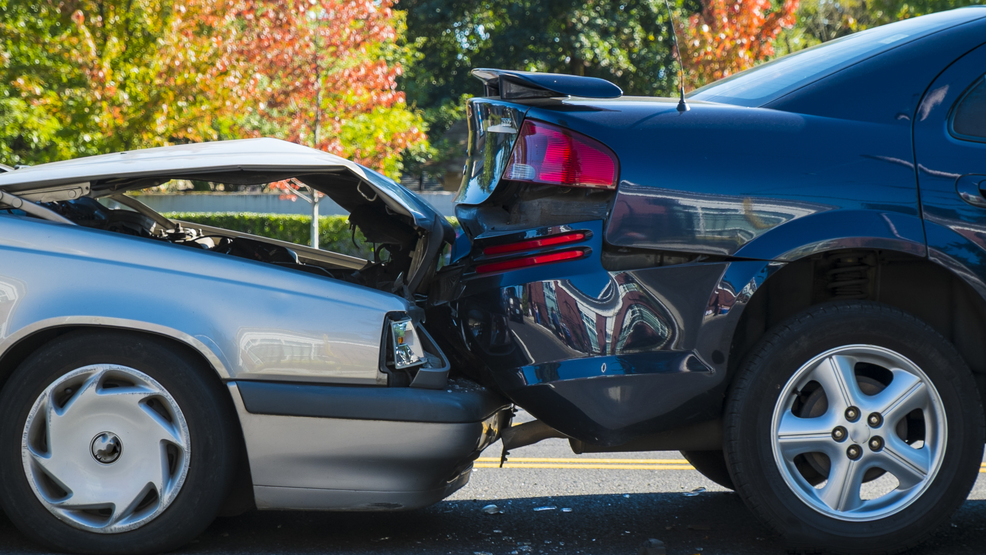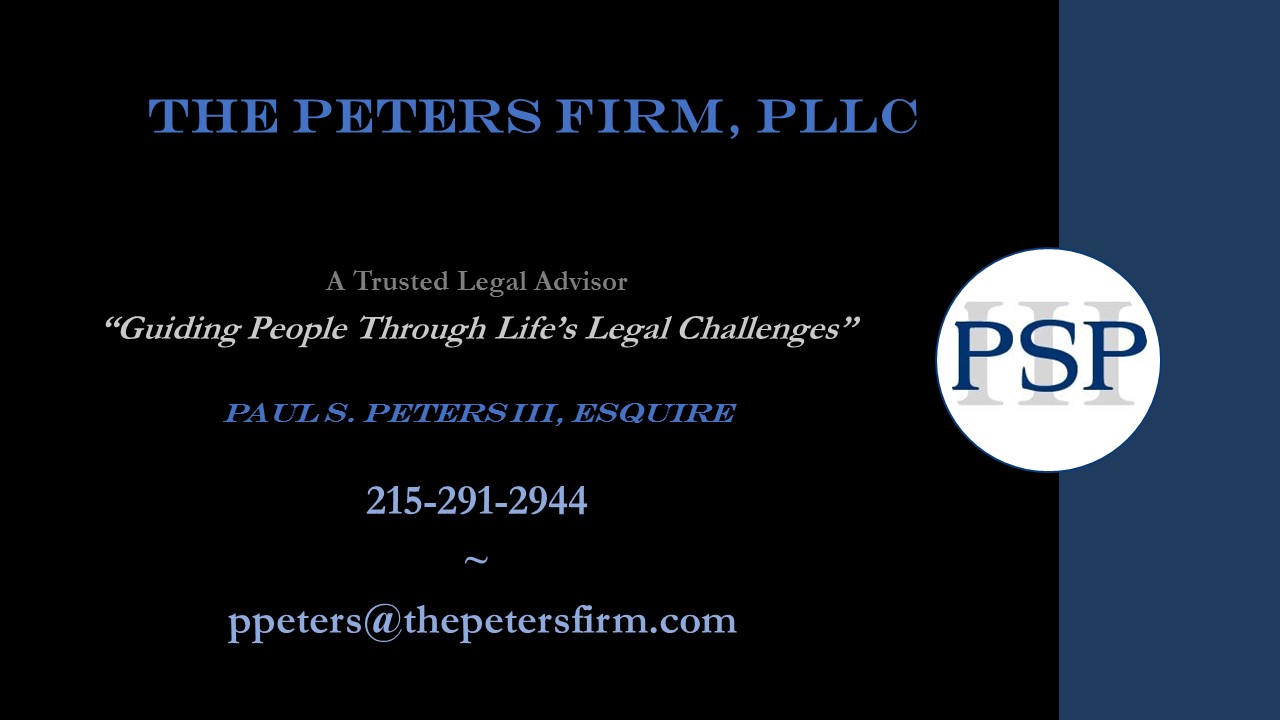
Taking the Confusion Out of Pennsylvania Car Insurance
If you drive or own a car in Pennsylvania you must have automobile insurance for your protection, the protection of others, and because it is required by Pennsylvania Law.
Over the years of practicing law and teaching, I have learned that while most people have auto insurance, they are unclear as to what their insurance coverage means and any areas of risk having the wrong coverage, or not enough coverage, may pose.
Risk of Not Having Pennsylvania Auto Insurance
- A minimum of $300 fine for driving uninsured
- A three-month suspension of your vehicle registration and payment of a restoration fee
- A three-month suspension of your driver’s license and payment of a restoration fee
- Impound of your vehicle and fee to recover your vehicle
If you are found to be at fault for an automobile accident while driving without automobile insurance, the consequences may be worse than those listed above. You will be held personally responsible for paying for any damage or injuries you cause (which can be from a few hundred to hundreds of thousands of dollars), and attorney’s fees to defend you in a lawsuit.
Some of the ways having automobile insurance protects you are:
- Insurance money to pay for damages and injuries you cause to another person, and/or their vehicle
- Your defense by an attorney in any lawsuits at the expense of your auto insurance company
- Paying for medical treatment for injuries you sustain in an accident
- Repairing or replacing your car due to damage or total loss from an accident
- Paying for a rental car while your car is being repaired/replaced
- Providing financial protection if you are injured/damaged due to the fault of an uninsured driver
Types of Pennsylvania Auto Insurance Coverages
Liability Insurance
Any section labeled liability, bodily injury, or property damage, is an explanation of the limits your insurance company will pay on your behalf if you are at fault for an accident and sued.
Bodily Injury
Your policy may state the following for bodily injury:
$100,000 each person/$300,000 each occurrence or $15,000 each person/$30,000 each occurrence
Translation: if you are at fault for an accident, your insurance company will pay the injured party up to $100,000 on your behalf, and $300,000 total if there are multiple people injured. It is this coverage that prevents you from having to pay out a large sum of your own money for injuries to others due to your negligence. The higher this coverage the better.
If you only have coverage that is $15,000/$30,000 and an accident you caused results in someone sustaining severe injuries that leaves the person permanently injured, your coverage may not cover all the costs. If at trial a jury awards the person $100,000, your insurance will pay $15,000 of that, and you are personally responsible for the other $85,000. Therefore, going cheap on liability coverage may lead you to serious exposure for financial ruin if you cause an accident.
Property Damage
This coverage may say $100,000 for each occurrence. This means the insurance company will pay up to $100,000 for damage you cause to another’s property as the result of an accident you cause. This includes damage to someone’s car, home, fence, property within the car, etc.
Medical Expenses Coverage
The medical expenses coverage may state $5,000 or $10,000 each person. This coverage is also known as “First Party Benefits” or PIP coverage.
When you are personally injured in an automobile accident, it is your auto insurance that pays your medical bills, not your health insurance. Therefore, if your policy lists $10,000, it means your auto policy will pay up to $10,000 of approved medical treatment, tests, and devices/aids.
Any medical bills over the $10,000 may be paid by your health insurance, which may then seek reimbursement from you if you are awarded any money from a lawsuit. Your attorney may also issue a letter of protection to the medical providers promising to pay their bills out of the lawsuit in exchange for continued medical treatment. I strongly suggest having this coverage on the higher end so you receive the proper and uninterrupted medical treatment if you sustain injuries in an automobile accident.
Uninsured/Underinsured Motorist Coverage
Just like liability coverage, the Uninsured/Underinsured section may state $25,000 each person/$50,000 each occurrence.
This coverage is triggered if you are injured in an accident by someone with no auto insurance or minimum liability coverage of $15,000/$30,000.
If you are in an accident caused by another without insurance and injured, your likelihood of being compensated is slim as that person most likely does not have thousands of dollars to pay you for your losses. Therefore, you make a claim against your own insurance company through the uninsured coverage. If in the same accident the person at fault only has a $15,000 in liability coverage and your injuries result in $100,000 of damage, the other person’s policy will pay the $15,000, and you may make a claim against to your underinsured coverage to pay part of the remaining $85,000.
Collision Coverage
Collisions coverage pays for the repair or replacement of your car due to damages in an accident. This is paid regardless of who is at fault for the accident. Your policy should state this coverage as a financial limit or simply state “actual cash value.”
This coverage may also list a deductible as low as $250 or as high as $2,500. The higher the deductible, the cheaper your insurance premium, but the more out of pocket you will pay in the event of an accident. A deductible is what you must pay first, before the insurance company starts to pay. If you have a $250 deductible, and your car sustains $1000 in damages, you would pay the first $250, and the insurance company would pay the remaining $750. If you had the $2,500 deductible in the same example, you would pay out of pocket for the entire $1000 in damages, since you would not have met the deductible to trigger a payment from the insurance company.
Comprehensive Coverage
Comprehensive coverage also pertains to damage to your vehicle. This coverage may list a dollar amount or “actual cash value.” It will also list a deductible amount. Comprehensive coverage applies to situations that are not defined as an auto collision (accident with another car or hitting a guardrail). Examples of comprehensive coverage situations are hitting a deer, damage from hail, a car fire, theft, vandalism, or broken window/windshield. The deductibles in these cases would work the same as in the collision example above.
Towing/Rental Coverage
This coverage pays for your car being towed and a rental car while your car is being repaired/replaced. This coverage is optional.
Full Tort vs. Limited Tort Coverage
The selection of Full Tort vs. Limited Tort coverage is crucial as it has a significant impact on your rights to compensation for personal injuries sustained in an accident that is not your fault.
Full tort means if you are injured in an accident that is not your fault, you have the legal right to make a claim against the other person no matter what level of severity your personal injuries are. You can make a claim for whatever the type of injury and resulting pain and inconvenience you suffer is valued at.
Limited tort means you are “limited” in the type of non-economic personal injuries you may make a claim for. You must suffer a “serious injury” which is defined as death, serious impairment of a bodily function (ex. Paralysis), or permanent serious disfigurement (ex. Limb amputation). Therefore, in most instances, to make any claim under a limited tort policy, your injuries must be catastrophic.
The limited tort application does have some exceptions. If you are in an accident caused by a drunk driver, a commercial vehicle, or an out of state driver, your matter may be handled as full tort, not limited tort.
The impact on your insurance is that a limited tort policy is cheaper than a full tort policy. However, by choosing the cheaper limited tort coverage, you significantly reduce your ability to be compensated for personal injuries. Experiencing three months of serious neck and back pain can create chaos in your life including missing work/pay, the loss of ability to do certain things or miss out on events, cancellation of vacations, inability to care for children, etc. With a limited tort policy, you would not be able to receive compensation for those losses/inconveniences and the possibility you have lasting pain, complications, or limitations for the rest of your life. Hence, I always advise people to invest in a full tort policy for their benefit and family’s benefit.
Pennsylvania Auto Insurance Requirements
While the state of PA requires each driver have insurance, not all of the above coverage is required. Pennsylvania requires the following:
- $15,000 bodily injury liability per person
- $30,000 bodily injury liability per accident
- $5,000 property damage liability per accident
- $5,000 medical benefits
Uninsured/Underinsured, Collision, Comprehensive, Towing, and Rental are all optional coverage. However, when purchasing or leasing an automobile, the auto lender may require more coverage than the minimum required by law.
If you are purchasing auto insurance for the first time, amending your coverage, or involved in a motor vehicle accident, whether your fault or not, you should speak with a trusted attorney that is knowledgeable in insurance and automobile accident law to ensure you get the best coverage possible, and fully understand your rights and responsibilities.
Choosing the cheap route for automobile coverage creates the risk of serious life issues if involved in an accident. You may not be able to be compensated for injuries, have your car repaired or replaced, have your medical bills covered, or be financially protected against personal and property damage you cause.
Thank you for reading.
- Paul S. Peters III, Esquire



